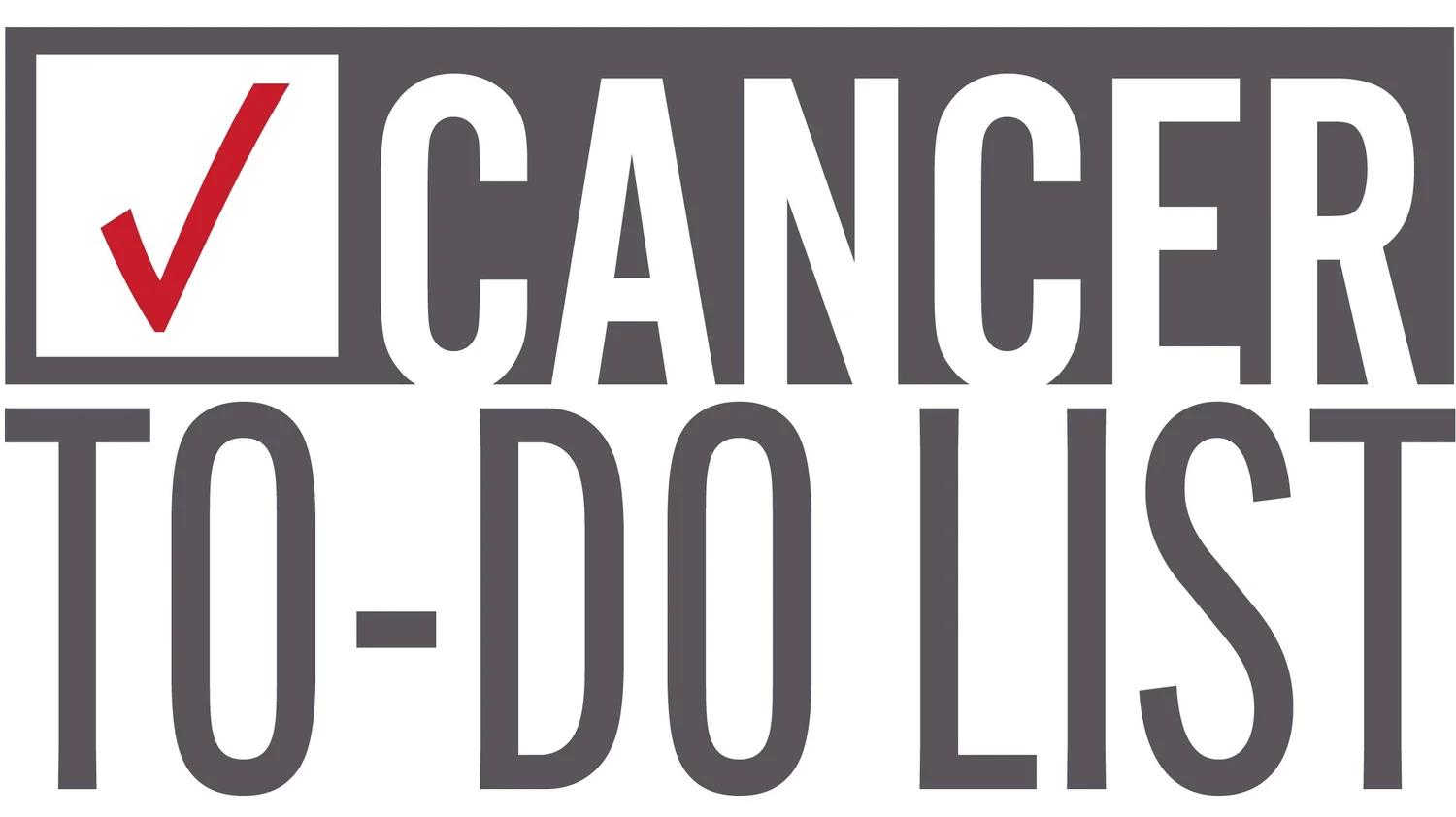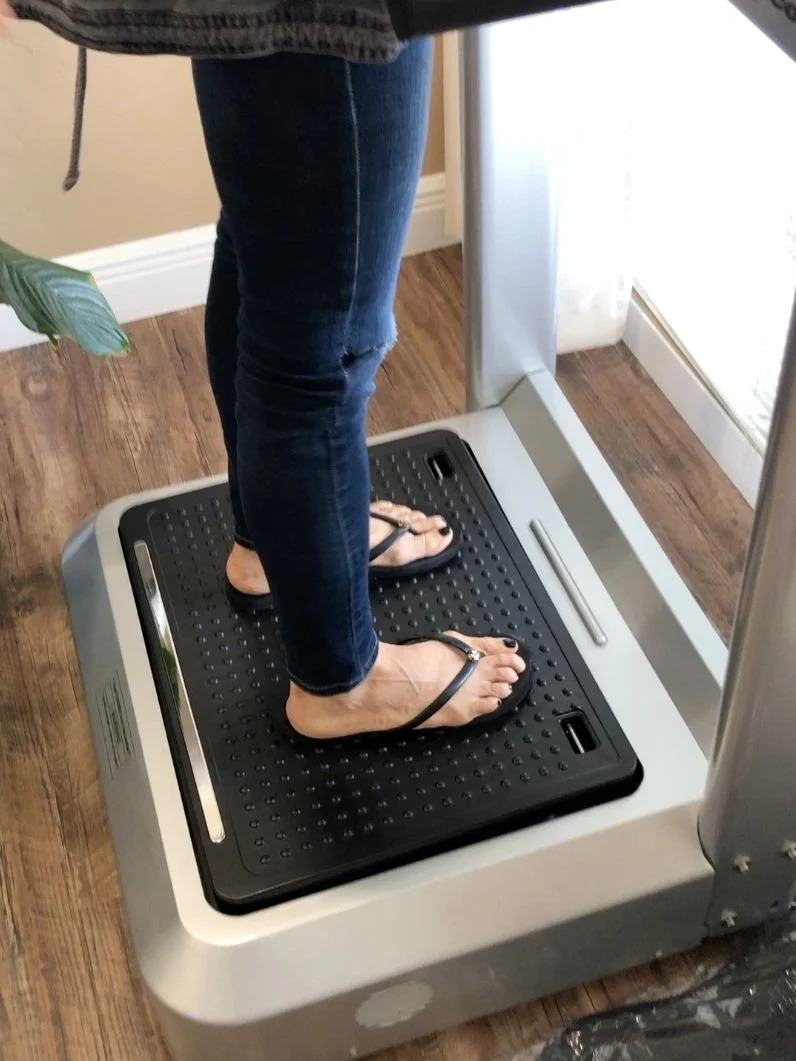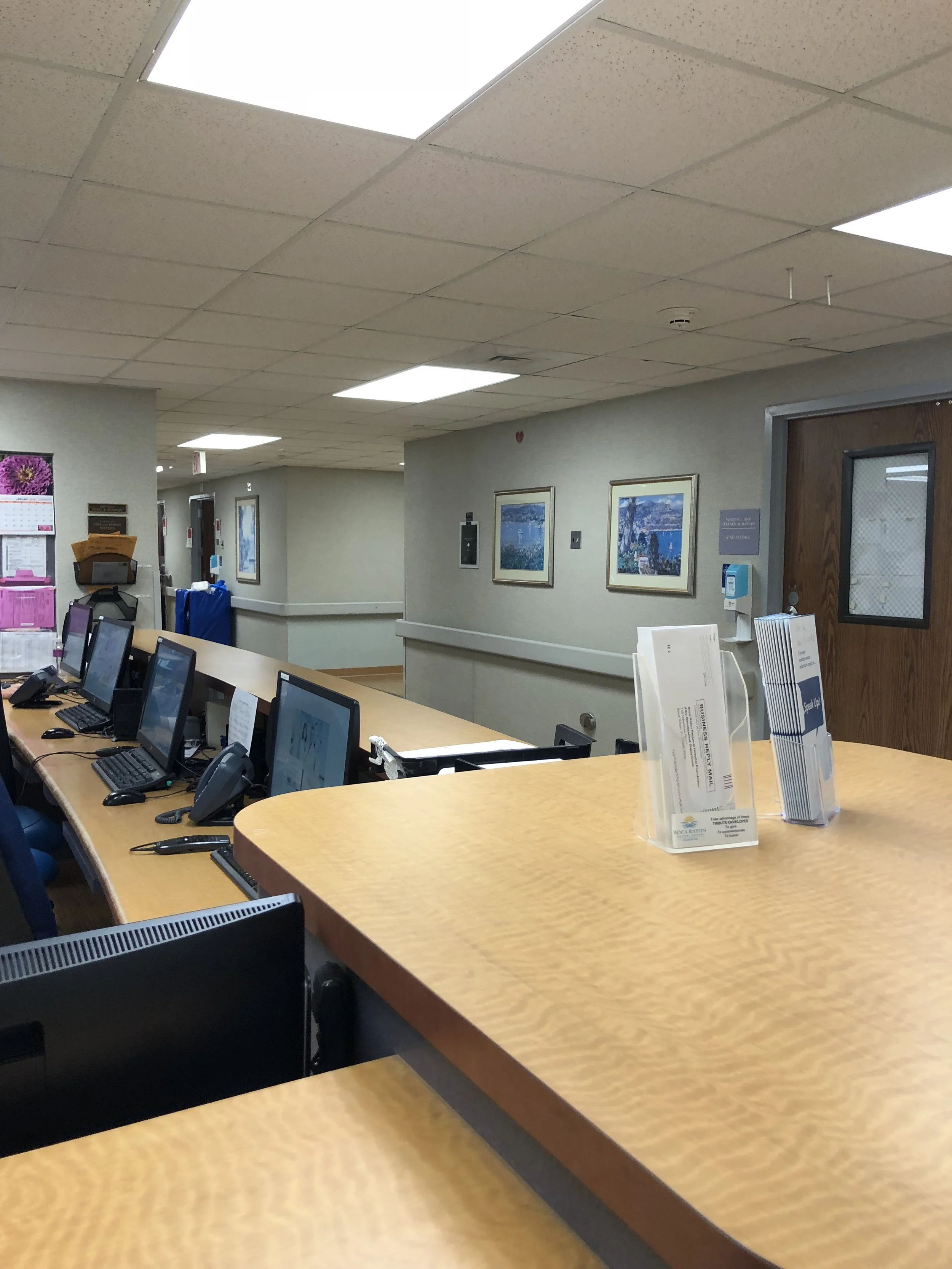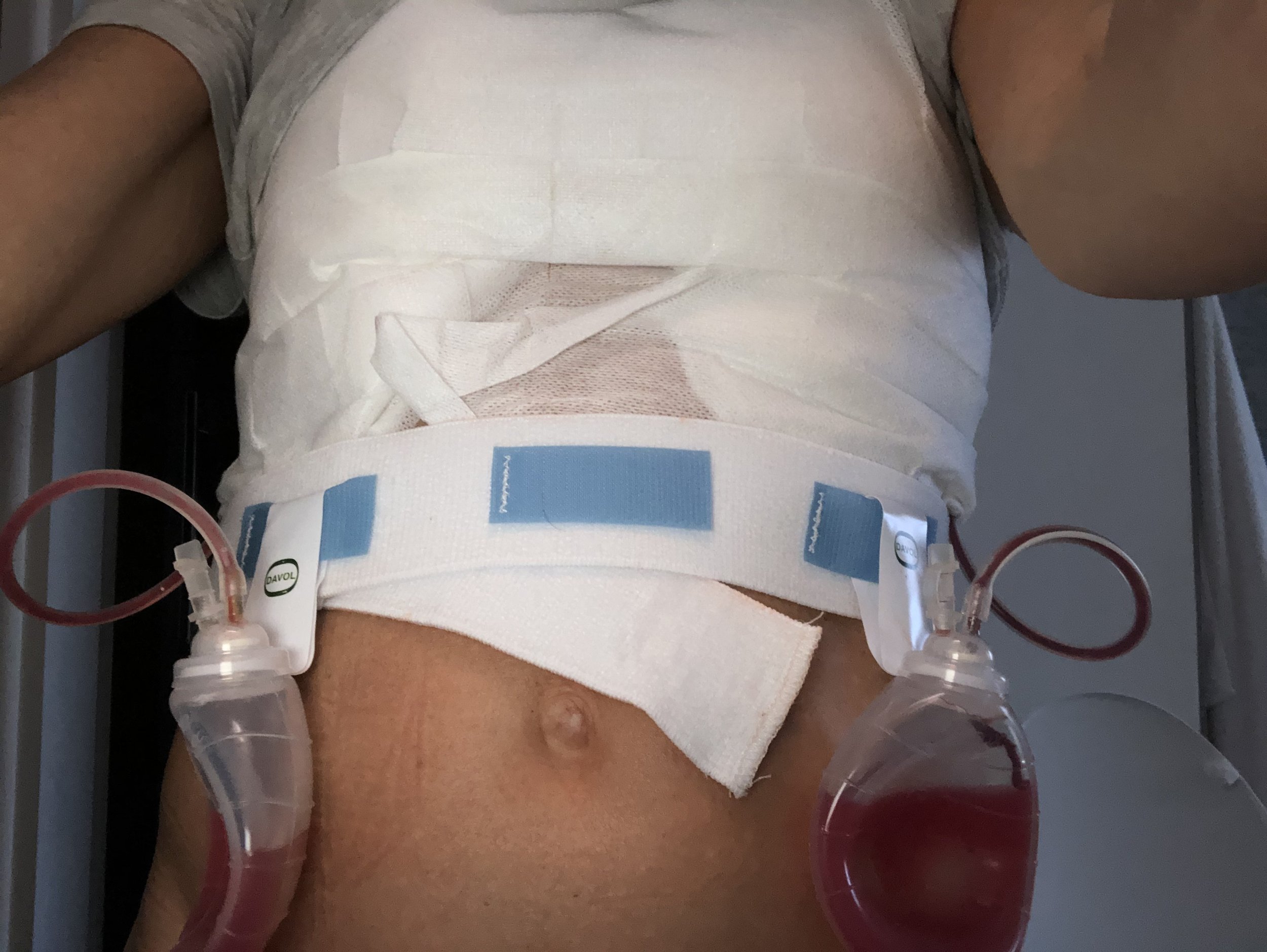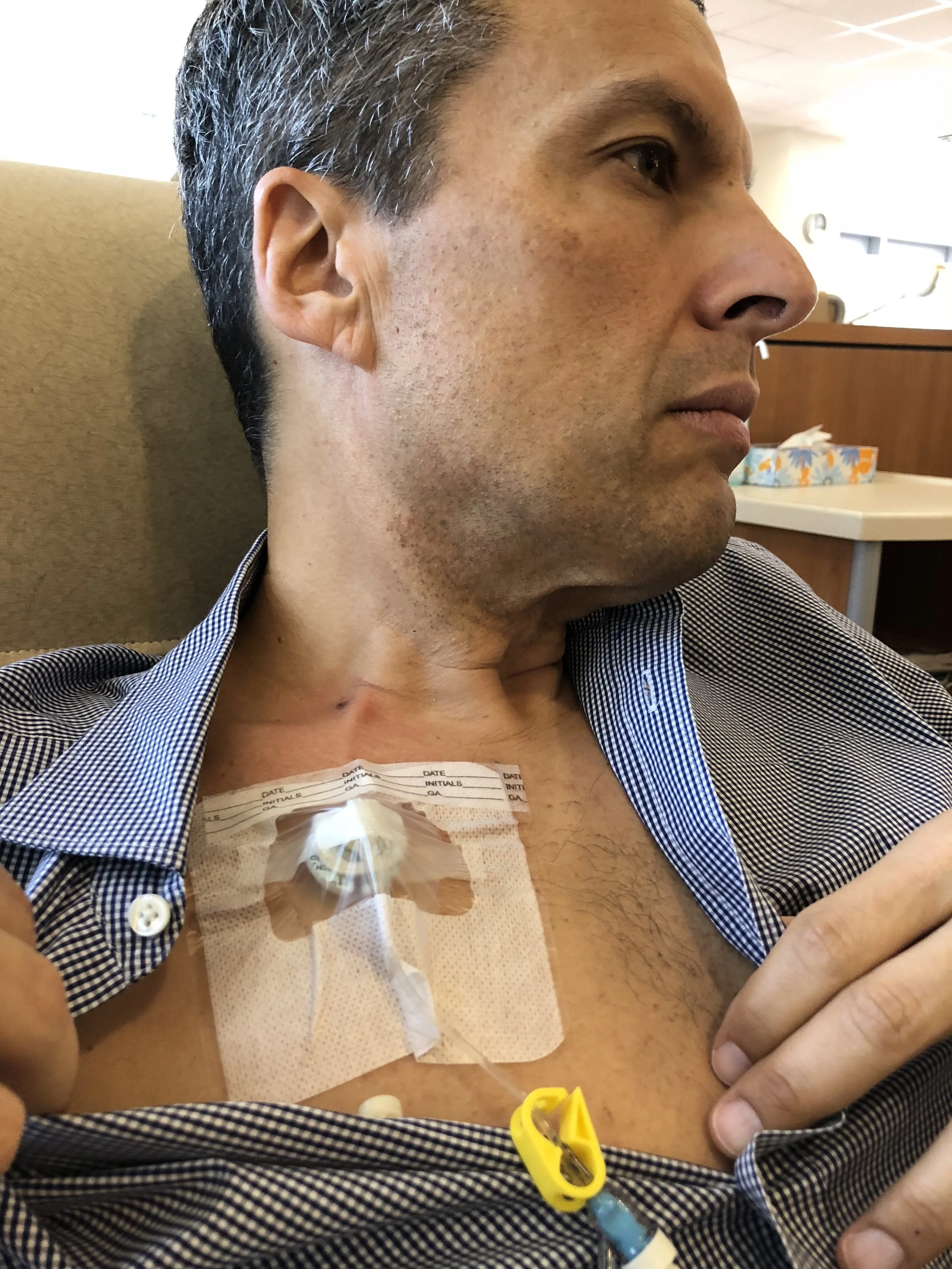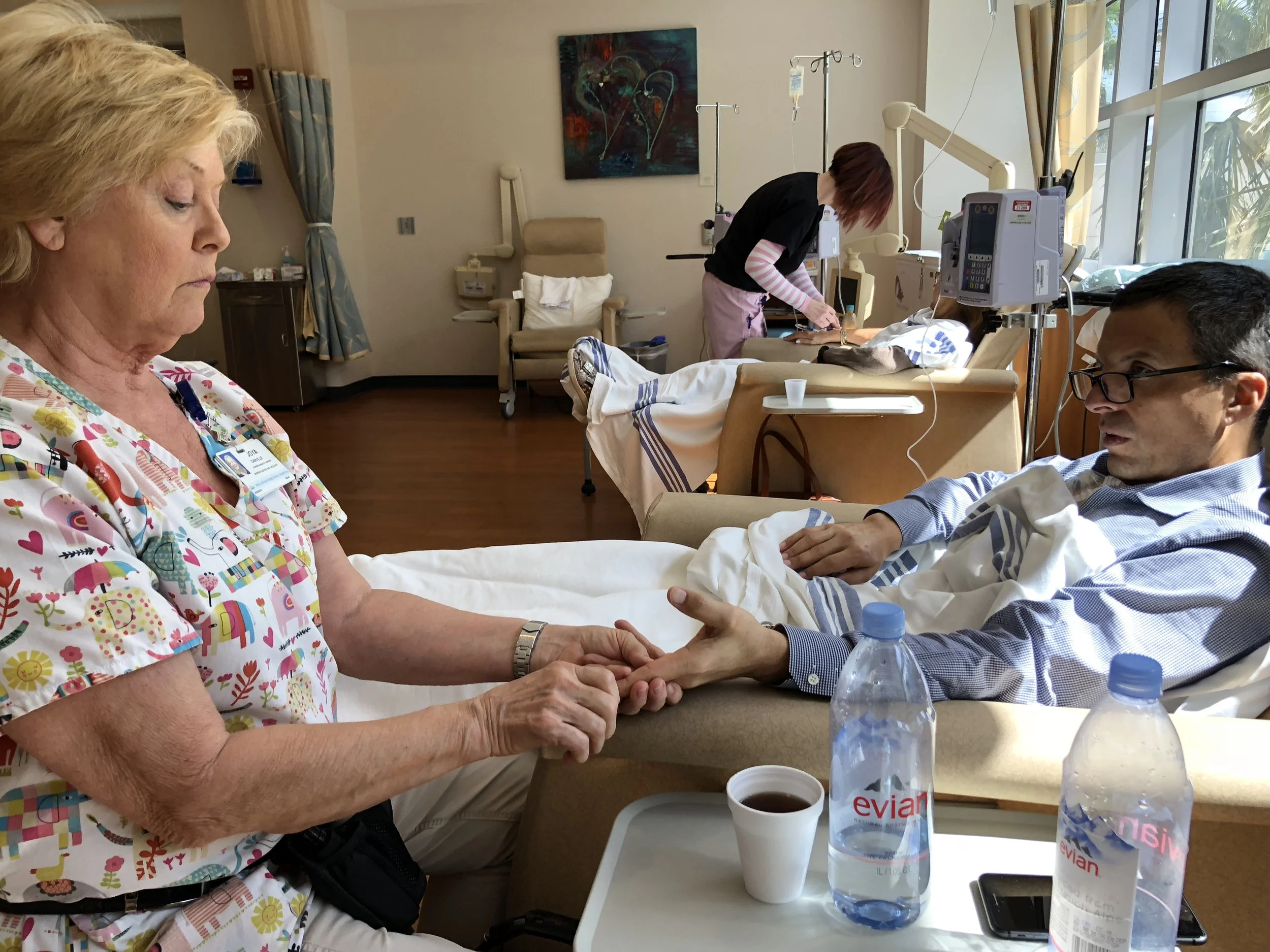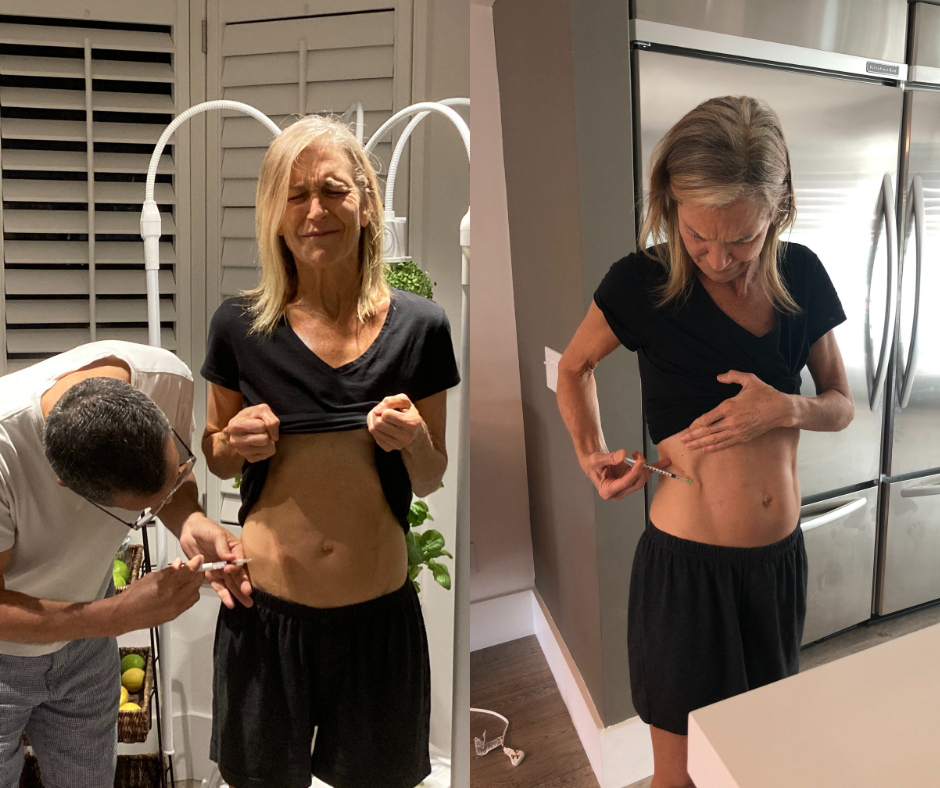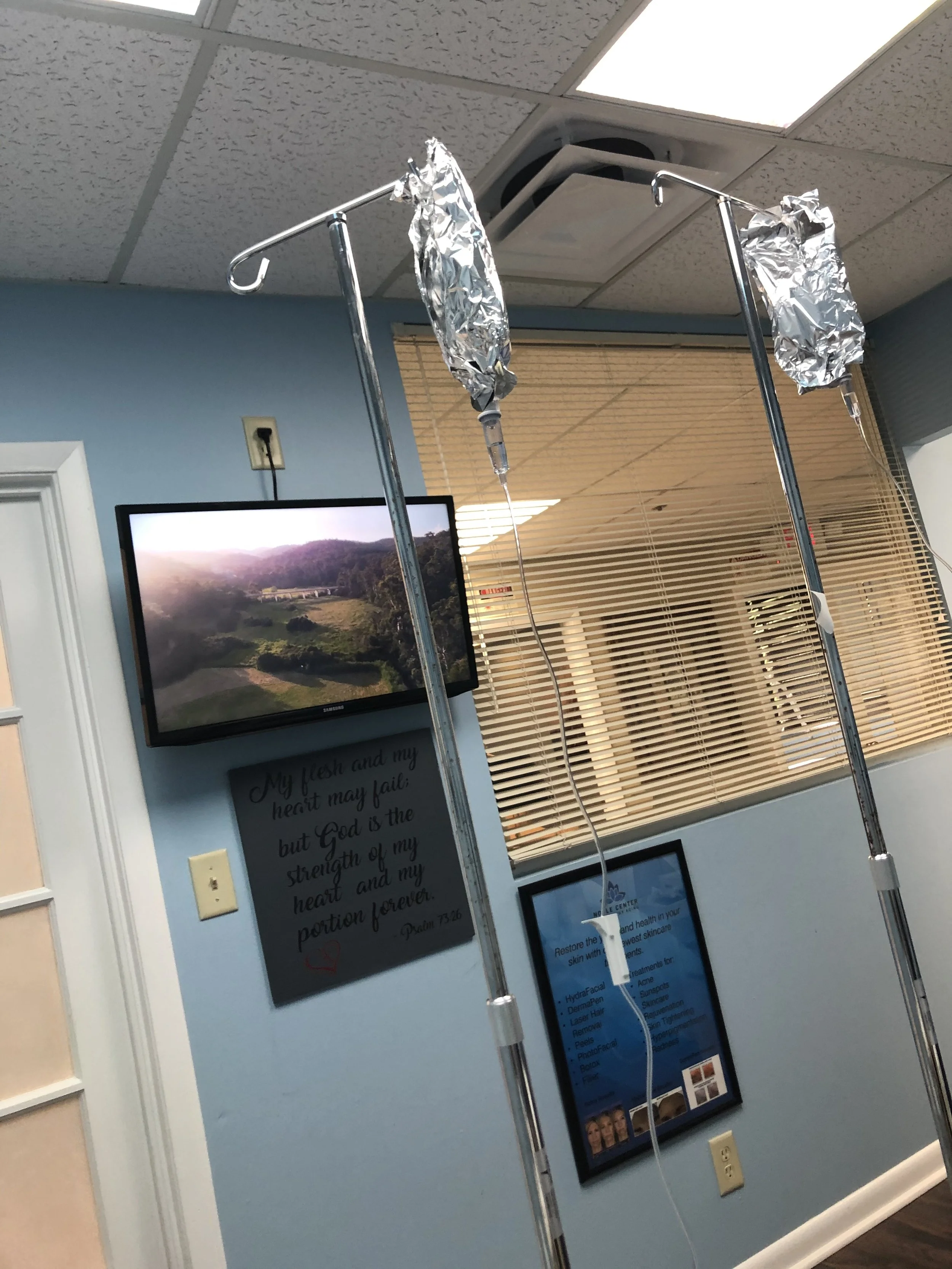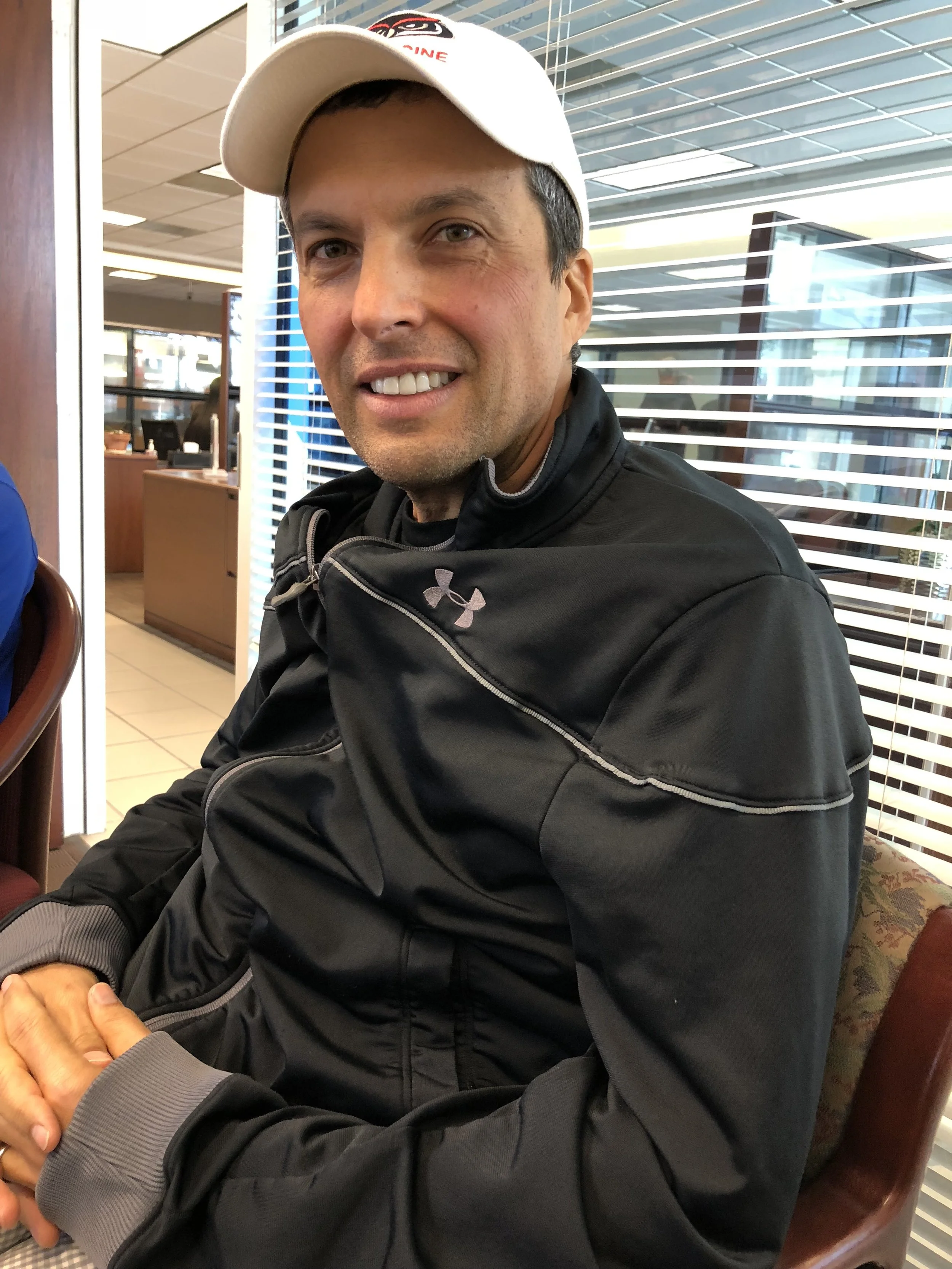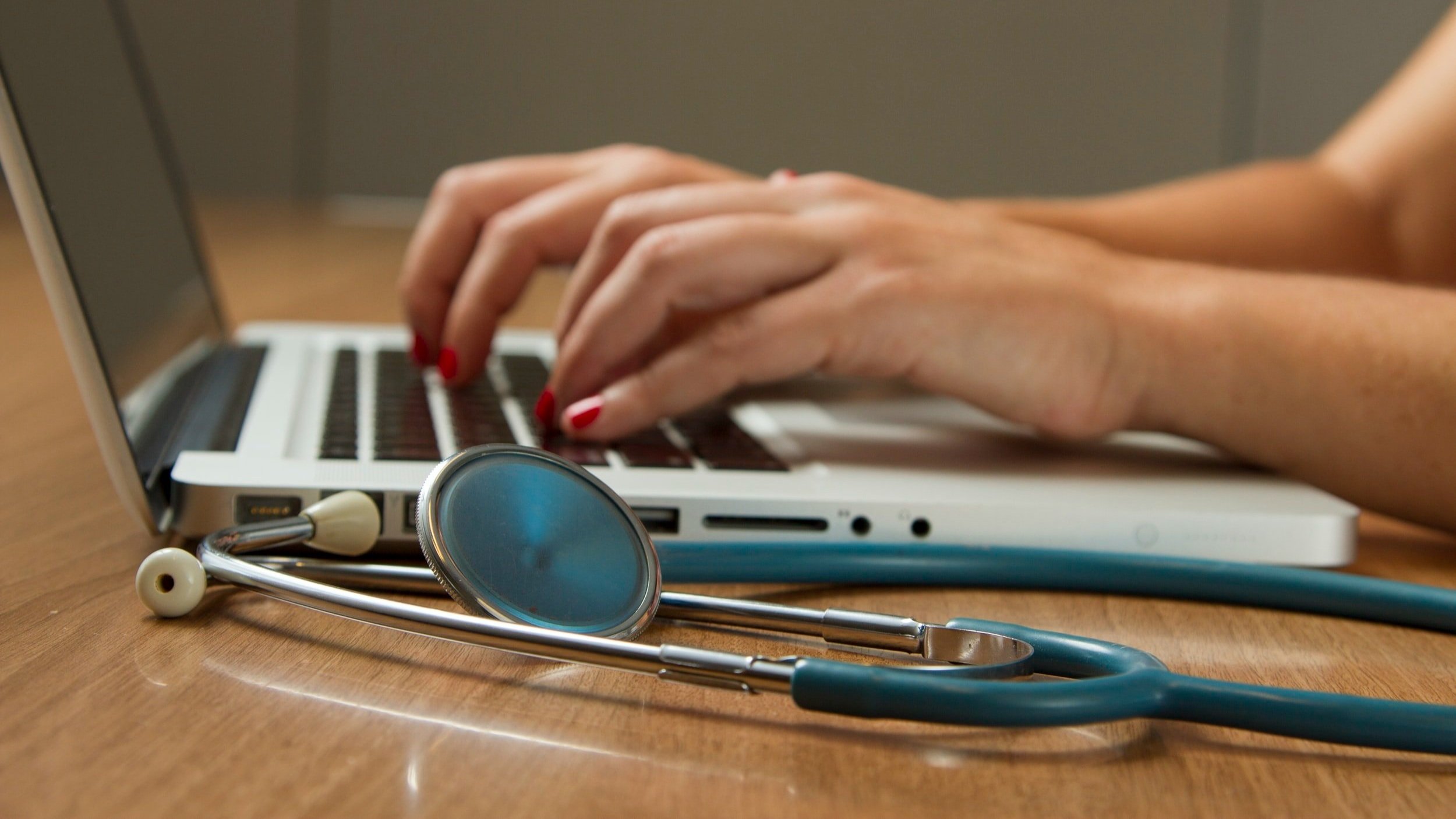
Conventional Treatment
Conventional Treatment
Conventional treatment for cancer encompasses traditional approaches such as surgery, chemotherapy, radiation, and drug therapies, including some immunotherapies. You may hear the term “adjuvant therapy,” which means adding a treatment to your protocol in order to kill any remaining cancer cells. For instance, chemotherapy after surgery would be adjuvant.
I love this quote by Bahaullah, in Tablet to a Physician, “Do not neglect medical treatment when it is necessary, but leave it off when health has been restored. Treat disease through diet, by preference, refraining from the use of drugs. Abstain from drugs when the health is good, but administer them when necessary.” There is a place for conventional treatment, and often the treatment may eliminate the cancer and/or prevent recurrence. For instance, R0 resection means the surgery resulted in a curative resection and the patient has a minimal chance of recurrence, and better postoperative quality of life.
However, even though conventional treatment is sometimes necessary, it is important to know that chemotherapy and radiation are a shotgun approach to killing fast-dividing cancer cells, but they do not impact the most dangerous cancer cells, which are CSCs (cancer stem cells). This is why you may want to consider an integrative approach (blending conventional treatment with non-conventional), because it addresses both the fast-dividing and stem cells simultaneously. See CSCs section below to learn more.
-
Although chemotherapy and radiation kill the majority of cancer cells, they do not kill cancer stem cells.
-
The lymphatic system can be your friend or foe. Since it is a transporter, it carries cancer cells, but it also carries toxins out of the body.
-
The most common method of treating cancer is surgery. The goal of surgery should be to remove the cancer from the body. Many patients are cured because of surgery.
-
Chemotherapy is treatment with medications to kill some cancer cells. Learn about tips and tools to use alongside chemo.
-
Targeted therapy uses high doses of radiation to kill cancer cells and shrink tumors by damaging their DNA.
-
Learn about some of the natural therapies and remedies that we implemented or had on hand during Joel’s treatment.
-
There are various immunotherapy treatments that stimulate the body’s own immune system to attack cancer cells.
-
The FDA approves drugs for treatment of specific conditions. Off-label is when a physician prescribes a drug for use outside of its intended use. Off-label drugs may be used in both conventional and CAM protocols to treat cancer.
If you know you are going to do chemotherapy and/or radiation, you may want to still explore non-conventional or CAM (complementary and alternative medicine) treatments. This is what we did. We felt it necessary to take an integrative approach to address our health as a whole. Read “CAM and Covid“ for more about our experience.
Your conventional medical team may consist of: primary doctor, surgeon, oncologist, radiation oncologist, specialty oncologists, other specialists (such as a cardiologist), physician assistant, nurse practitioner, and nutritionist/dietitian.
You will most likely be assigned an oncology team. Even though the team is selected for you, remember you’re entitled to request different doctors. Feel free to vet the doctors. Ask about their credentials and experience.
Visit the Treatment page to learn more about your options and to download a list of questions for surgeons and oncologists.
Cancer Stem Cells
CSCs (Cancer Stem Cells)
It is crucial that all cancer patients understand the term “cancer stem cells” or “CSCs.” Tumor initiation is controlled by CSCs, a distinct group of cells with stem-like character. These hostile cells will do everything possible to survive and continuously replicate. CSCs may still be roaming around the body after surgery, when a tumor is removed, and also after chemotherapy or radiation sessions are completed. Dr. Ralph Moss explains it this way, “Cancer stem cells are ‘tumor-initiating’ cells, and are defined as ‘rare cells with indefinite potential for self-renewal that drive tumor formation.’ These CSCs represent ‘the most malignant portion of the total population of cells that makes up a tumor.’ These cells are not only resistant to chemo and radiation, but may be what ultimately cause tumor recurrences and metastases. In fact, chemo and radiation can actually make CSCs more dangerous. This last point is controversial, but with the weighty decisions that cancer patients have to make regarding treatment, they have the right to know that they may still be left with CSCs roaming around their bodies, and in some cases they may be angrier than ever. The good news is that CSCs do not always result in metastasis, and in many cases the patient’s immune system is able to eliminate them.” https://www.ncbi.nlm.nih.gov/sites/ppmc/articles/PMC1459485/
Eradicating CSCs is your goal as a cancer patient! Jane McLelland (Stage 4 cancer survivor) in her book, How to Starve Cancer, explains that she figured out how to starve the cancer’s stem cells, and then kill them when they were in a weakened state. Some dietary compounds, off-label drugs, and CAM treatments can play a role in killing CSCs. Here are just a few examples:
Curcumin, genistein (a type of isoflavone mainly in soy), grape seed extract, lycopene, resveratrol, and sulphoraphane may target CSCs. https://pubmed.ncbi.nlm.nih.gov/25280404/ https://pubmed.ncbi.nlm.nih.gov/26503998/
Epigallocatechin-3-gallate (EGCg), an active catechin present in green tea, has been shown to suppress CSC growth in various cancers. https://pubmed.ncbi.nlm.nih.gov/26930714/
Honokiol Magnolia Bark has been found to enhance the activity of radiation therapy by simultaneously killing cancer stem cells. https://pubmed.ncbi.nlm.nih.gov/22319203/
Metformin (an off-label drug) may kill cancer stem cells. https://pubmed.ncbi.nlm.nih.gov/24859412/ https://pubmed.ncbi.nlm.nih.gov/26791139/ https://www.ncbi.nlm.nih.gov/pmc/articles/PMC4697317/
IV (intravenous) vitamin C may kill cancer stem cells. https://pubmed.ncbi.nlm.nih.gov/16157892/ https://www.ncbi.nlm.nih.gov/pmc/articles/PMC7063061/
From Jane McLelland's book, How to Starve Cancer.
Circulating Tumor Cells
Circulating tumor cells (CTCs) are cancer cells that are shed by a primary tumor and travel through the bloodstream of cancer patients. These sound a lot like CSCs, and many scientists believe they are identical.
CTCs have been proposed as a blood marker for cancer and an independent prognostic factor for progression-free survival (PFS). CTCs are measured through blood testing, called liquid biopsies. For now, this blood test is not part of mainstream oncology. We had our CTCs measured a few times with the help of CAM doctors. Visit the Tests page to learn more about getting your CTCs tested.
It is important to know that conventional treatment (chemotherapy and radiation therapy) is a shotgun approach to fast-dividing cancer cells, but it does not impact the most dangerous cancer cells, which are cancer stem cells (CSCs). This is why you may want to consider an integrative approach (blending conventional treatment with CAM), because it addresses both the fast-dividing and stem cells (CSCs and CTCs) simultaneously.
“When you hear a surgeon say ‘we got it all’, what he or she is really saying is we have destroyed all detectable cancer cells and now it is up to your immune system to find and destroy CIRCULATING TUMOR CELLS that remain in your body. ”
The Lymphatic System
FRIEND OR FOE
The lymphatic system is important to understand, especially in light of a cancer diagnosis. The lymphatic system is a part of the body’s immune system and it has many functions. According to Cleveland Clinic, it includes “protecting your body from illness-causing invaders, maintaining body fluid levels, absorbing digestive tract fats, and removing cellular waste. Blockages, diseases or infections can affect your lymphatic system’s function.”
The lymphatic system can be a cancer patient’s friend or foe. Since it is a transporter, it carries cancer cells, but it also carries toxins out of the body. Cancer can start in the lymph nodes or spread there from another part of your body. Even though your lymphatic system may have facilitated the spread, healing your lymphatic system and keeping it pumping can be a major contributor to your healing. Instead of your lymphatic system being part of the problem, make it part of your solution.
Learn more about this diagram on the American Cancer Society website.
My explanation below is from 2 sources: a breast cancer guide given to me by my cancer center (written by EduCare, Cope Library 2012), and from the American Cancer Society website. https://www.cancer.org/treatment/understanding-your-diagnosis/lymph-nodes-and-cancer.html
The lymphatic system serves as the sewage system for cellular waste in the body. Here is how it works: lymph vessels collect and carry lymph fluid through lymph nodes (amazing little structures that act as filters to stop bacteria, cellular waste, and cancer cells from entering the bloodstream). We have hundreds of lymph nodes throughout the body, with clusters found in the neck, underarms, chest, abdomen, and groin. It is important for this lymph sewage system to work properly and uninhibited, or lymph nodes become clogged and swollen. Most often, swollen lymph nodes occur because of colds, strep throat, ear infections, or other illnesses. However, sometimes swollen lymph nodes can signal that there is a problem, like cancer.
Cancer that begins in the lymph nodes is called lymphoma. Other cancers can spread to other parts of the body through the lymphatic system or the bloodstream. The spread can be local (contained in the same area as the tumor); regional (in the lymph nodes near the tumor); or distant (to other organs in the body — known as metastasis).
When cancer does spread to lymph nodes, it usually spreads to nodes near the tumor itself. I have a few swollen lymph nodes that show up on ultrasounds since my cancer surgeries, but they have not looked like cancer. If a swollen lymph node is suspect, most doctors will recommend a needle biopsy, which tests tissue samples for cancer. I have read about the controversy over whether or not to biopsy. Here is a study about breast cancer that will shed some light on this topic. https://www.ncbi.nlm.nih.gov/pmc/articles/PMC4015162/
For breast cancer, a small amount of lymphatic fluid leaving the breast is drained in the lymph nodes. The majority is drained through the nodes of the armpit, referred to as axillary nodes. Your surgeon, like mine, may do a sentinel node biopsy. Sentinel nodes are the first few lymph nodes that a tumor would drain into, and thus cause them to be cancerous. A sentinel node biopsy involves injecting a radioactive tracer substance that allows the surgeon to easily locate the sentinel nodes during surgery. Once the nodes are removed, a pathologist immediately reviews them for cancer. If cancer is detected, the surgeon may remove more lymph nodes. As a result of my biopsy, it was determined that both of my sentinel nodes were clear of cancer . . . but the pathology during the surgery was incorrect. A week after my surgery, subsequent pathology revealed that one lymph node was cancerous.
If your surgeon removes all of the lymph nodes under your arm, this is known as a full axillary dissection and can cause lymphedema. Lymphedema is basically a backing up of the lymph fluid as a result of lymph node removal. When lymph nodes are removed or damaged by radiation, the fluid can back up, often causing painful swelling.
In many ways, I am grateful for my journey because I still have most of my lymph nodes. I now understand how important they are to overall health!
After surgery, you want to do everything you can to strengthen your remaining lymph nodes. It is wise to focus on the lymphatic system, since it is a crucial element of the immune system — our lymph system needs to work properly to remove toxins from our body. It doesn’t have a pump, so we have to engage in some activity that stimulates lymph movement. This is what keeps the lymph system healthy. It is possible that my lymph system was not functioning properly. I have become a “lymph-addict” (get it? lymphatic?) working every day to keep my lymph system pumping in a variety of ways.
TOOLS and TIPS FOR Supporting Your Lymphatic System
Here are some ideas for keeping your lymph system strong. Please do not be overwhelmed by this list, thinking you have to do all of these to strengthen your lymphatic system. For instance, I eat a healthy diet, stay hydrated, and exercise regularly, but the rest of these I do periodically when I can fit them into my schedule.
ACUPUNCTURE
Ancient Chinese method of sticking very thin needles into designated points along invisible meridians (network of energy channels) that run through the body.
Visit the CAM Treatment page to learn more.
BATH/SHOWERS
Cold - the cold water shrinks blood vessels.
Hot - the hot water dilates blood vessels.
Alternate between cold and hot (two minutes of cold, and then two minutes of hot). This creates a “pump” response.
Use caution if you are pregnant or have cardiovascular disease.
My Experience: I take a hot bath and finish in the shower, alternating between cold and hot a few times.
BREATHE DEEPLY
Deep breathing exercises help the flow of the lymph fluid through the body and away from the area with lymphedema. https://www.cancerresearchuk.org/about-cancer/coping/physically/lymphoedema-and-cancer/treating/exercise
Visit the De-stress page to learn more about deep, belly breathing.
My Experience: First thing in the morning, before I get out of bed, I practice deep breathing a few times. I do the same thing at night before going to sleep. If I awaken in the middle of the night to use the restroom, I put myself back to sleep with deep breathing. Deep breathing has become such a habit, that I find myself naturally deep breathing throughout each day. I even deep breathe naturally when running outdoors.
CLOTHING
Wear loose clothing.
Tight clothing reduces circulation in the lymphatic system.
My Experience: I rarely wear tight clothing, except during exercise. I love the feel of non-toxic materials on my body, so I buy all-natural clothing. Visit the Detox page to learn more about healthier fabrics.
DIET
Eat a low-fat, high-fiber, plant-based diet, and avoid processed foods.
Research shows there is a strong link between diet and immunity, including the lymphatic system. https://www.ncbi.nlm.nih.gov/pmc/articles/PMC6723551/
Our Experience: Visit the Diet page to learn more about what we eat.
EXERCISE AND SWEATING
Bouncing, jumping, and rebounding exercises are ways to naturally pump your lymphatic system.
Rebounding accomplishes two things at the same time: exercise and lymphatic pumping.
Visit the Exercise page to learn more.
My Experience: I purchased an inexpensive trampoline and used that for two years, then finally upgraded to a more expensive trampoline that I use almost every day. I try to jump for ten minutes every morning.
HYDRATION
Insufficient fluid intake can make the lymphatic system sluggish.
Drink at least 64 ounces of water each day. Visit the Hydration page to learn more.
Our Experience: I keep a large glass of water in my room each night and drink it first thing in the morning. After breakfast, I fill a large glass pitcher that I drink from throughout the day. If I am leaving the house for the day, I fill a large water bottle and take it with me. Joel fills his water bottle every morning with lemon water and refills throughout the day at work.
LYMPHATIC MASSAGE
There are various techniques you can do on your own.
See video for directions on self lymph drainage massage.
Make an appointment with a professional who specifically does lymphatic massage. Not all massage therapists do this technique.
My Experience: Every once in a while, I pull up the video and do the various techniques on my own, but my goal is to get to the point where I go for lymphatic massage once a month.
SKIN/DRY BRUSHING
Skin/dry brushing opens pores and stimulates the lymphatic system, as many of the lymph vessels lie just under the skin.
Use a skin brush before showering, and brush toward your heart, under arms, behind knees, inner thighs, and bottoms of the feet.
See video for directions on skin/dry brushing.
Do not brush your face or breasts, or if there is an active skin infection.
My Experience: I aim to skin/dry brush as often as possible before showering.
VIBRATION PLATE
A machine that you stand or sit on and it shakes your whole body.
Our Experience: We used a vibration plate at a CAM doctor’s office and decided to buy one to use at home. The CAM doctor recommended that I not only stand on the plate, but also put my hands on the plate (almost like I’m doing a push up) to shake my upper body. She recommended that Joel use the vibrate machine regularly, especially to avoid bowel obstructions. This is one of the reasons we are most thankful for this purchase.
A vibration plate shakes your body and gets your lymph system moving.
The most common method of treating cancer is surgery. Sometimes surgery is encouraged first, sometimes treatment will come before surgery, and sometimes surgery is not recommended or not helpful. The goal of surgery should be to remove the cancer from the body. This is called “curative.” The removal of localized tumors has saved many lives. Surgery is highly effective in some situations, such as an emergency situation like Joel's, or for localized cancer, when the tumor has clear margins and is easily accessible. Many patients are cured because of surgery. Unfortunately, when cancer has metastasized, the only use for surgery may be to relieve painful symptoms, for instance when the tumor is pressing on nerves. For breast cancer, lumpectomy and partial or double mastectomy is the norm.
To learn more about any cancer surgery, visit Cancer.gov and type in your kind of cancer. For instance, here is the page on breast cancer surgery. Visit the Julie’s Online Favorites page to learn more about items that may be helpful before or after surgery.
It is important to understand that surgery weakens the body and the immune system, so even though it is often necessary, it is important to prepare the body ahead of time, if at all possible. In Joel's case, that was not an option. In my case, it was. Here are a few ideas for how to prepare the body for surgery:
Surgery
It was a moment I will never forget…the surgeon walked down the hospital hallway to share news that would change our lives.
Eat a vegan diet.
Do a juicing fast.
Do a medically supervised, water-only fast. Water fasting is not a cure, but rather a process to reset the immune system and facilitate the body's own healing mechanisms. Here are some water fasting facilities around the U.S. I have done two water fasts: at TrueNorth Health Center and Balance for Life Health & Wellness Retreat. Read “Water Fasting Experiences” for more.
Get plenty of rest.
Be sure to vet the surgeon if you have a chance. Is he or she skilled? Well-respected? Because Joel’s case was emergent, he was assigned a surgeon. Thankfully, he turned out to be highly regarded. In my case, I was able to request a surgeon that was recommended by several friends.
I have been asked about whether to take pain medications after surgery. There is a place for medicine, especially when you need pain relief. The problem with pain medication is the overuse, not the necessary use. Pain medications after surgery can lessen inflammation and also allow the body to rest and heal. Sleep is important for healing. I only needed to take one round of pain medication on the first day following both of my surgeries. I used natural pain relievers as well, like bromelain and curcumin. Visit the CAM page to learn more about supplements.
After my double mastectomy, drains had to be monitored and the liquid charted. I was so thankful Joel monitored this for me.
THE HISTORY OF CANCER SURGERY
(Summarized from the book entitled The Emperor of All Maladies: A Biography of Cancer by Siddhartha Mukherjee.)
A surgeon named John Hunter was the first to classify tumors: moveable tumors were considered early stage and immovable were more advanced, invasive, and metastatic.
In 1846, anesthesia was discovered. This allowed surgeries to be longer, but the risk of infection remained high until an English doctor, named Lister, became the first surgeon to perform an operation in a chamber, sterilized with pulverized antiseptic. Yes, that is where the product, Listerine, got its name. Once surgery advanced in this way, many cancers were treated with surgery over the next 100 years.
By the early 20th century, localized cancers, and even advanced cancers, were removed. This resulted in some cures and some relapses.
A surgeon, named William Halsted, is credited with the discovery of a radical mastectomy, but when cancer still recurred, he started removing lymph nodes. When more lymph nodes were removed from breast cancer patients, there were side effects, such as swelling and long recovery. This is now known as Lymphedema (see above).
Our Experience with SURGERY
Visit the Our Story page to learn more.
“Chemotherapy works brilliantly for a few patients, pretty well for some, and poorly or not at all for others. This holds true even for people with the same stage of the same cancer. ”
Chemotherapy
Chemotherapy is treatment with medications to kill some cancer cells. There are different types of chemotherapy used for various cancers. One way chemotherapy is administered is through IV therapy. A port is placed in the patient’s chest, and the drug is administered through the port. Chemotherapy can also be administered in other ways, such as pill form.
You may be advised by your oncologists to stop supplements during chemotherapy and/or radiation. Most oncologists believe that supplements interfere with treatments. The article, "Antioxidants and other nutrients do not interfere with chemotherapy or radiation therapy and can increase kill and increase survival" explains that “ . . . 50 human studies involving 8,521 patients, 5,081 of whom were given nutrients, have consistently shown that non-prescription antioxidants and other nutrients do not interfere with therapeutic modalities for cancer. Furthermore, they enhance the killing of therapeutic modalities for cancer, decrease their side effects, and protect normal tissue. In 15 human studies, 3,738 patients who took non-prescription antioxidants and other nutrients actually had increased survival.” https://pubmed.ncbi.nlm.nih.gov/17283738/
There are some innovative concepts to learn about when dealing with chemotherapy, and even how chemo is delivered, such as chemosensitivity testing, hepatic arterial infusion (HAI), insulin potentiation chemotherapy (IPT) that Dr. Moss covers in the Moss Report.
Chemotherapy also damages healthy cells and can cause serious side effects such as anemia, immune suppression, bleeding, etc. We have learned about many treatments that can be done before starting chemotherapy to better prepare the immune system for conventional treatment. We have also learned about numerous CAM treatments that can be done alongside such as high-dose IV (intravenous) vitamin C.
Joel had another surgery, a few weeks after his major abdominal surgery, to install the port for chemotherapy.
THE HISTORY OF CHEMOTHERAPY
(Summarized from the book entitled The Emperor of All Maladies: A Biography of Cancer by Siddhartha Mukherjee.)
In the early 1900s, Paul Erlich tried to find a cure for cancer. He decided that chemicals could be developed to cure specific diseases by destroying the microbes or germs that caused them. This was the beginning of chemotherapy. He called his drugs "magic bullets." The challenge was that chemo not only killed cancer cells, but also killed normal cells.
Then during World War I, mustard gas was used for the first time. It caused respiratory problems, burnt skin, blisters, blindness, even death. Those who survived had depleted bone marrow, anemia, required blood transfusions, were prone to infections, and had low white cell counts.
In World War II, an American ship carrying over 70 tons of mustard gas blew up in the Italian port of Bari. The soldiers who were affected had the same effects as World War I soldiers. A chemical warfare unit was set up to investigate war gases, which eventually led to the use of nitrogen mustard on lymphoma, and also the discovery of 6MP. These substances were effective on lymphoma and leukemia patients at first, but eventually most of the cancers came back, and some aggressively. During this time, there wasn't much progress on cancer treatment solutions. Yet other good things happened, like antibiotics being discovered and hospitals being built to provide clean facilities for surgeries.
Sidney Farber, M.D. became interested in leukemia and was at the forefront of new cancer research. He was instrumental in starting the Children's Cancer Fund. By 1951, he had so many patients that he raised money for a facility that was built in 1952. Farber continued his research on an antibiotic, called Actinomycin D, that was proven to damage DNA. Unfortunately, it failed to help leukemic children. He tried it on other types of cancer, but it failed to help. When he combined X-ray with the drug, it initially helped children with metastatic kidney cancer, but the result was only temporary. This opened the door to treating solid tumors.
Fundraising for cancer research and finding a cure began during this time. In 1954, the Senate authorized the National Cancer Institute (NCI) to research chemotherapy drugs. By 1964, they had tested 82,700 synthetic chemicals, 115,000 fermentation products, and 17,200 plant derivatives.
More researchers came together under the NCI to do cancer research. The progression over the next several years was fascinating, yet challenging, for the doctors and patients involved in the experimental phase of testing. Sometimes high doses of drugs were used on very sick patients. With these various experiments, there were cures, there were many deaths, and there were several discoveries. Researchers learned that even though the visible cancer was gone, there was still cancer in the body.
Many critics say that the NCI worked backwards, because they worked toward finding a cure instead of identifying the cause.
In 1971, President Nixon signed the National Cancer Act and declared the war on cancer. Massive funding supported numerous clinical trials.
In 1975, an oncologist, named Einhorn, used Cisplatin and cured people with solid tumors. The NCI initiated the study of hundreds of thousands of drugs with severe side effects, and by 1979, they had set up 20 comprehensive cancer centers with teams of surgeons, oncologists, and radiologists.
By the early 90s, insurance companies were paying for high-dose chemotherapy, and most states started passing laws mandating coverage.
I took these photos on Joel's first day of chemo. It was hard to see the "caution" bag on the fluids they were putting in his body. Joel said, “Let the healing begin!"
We called her "Chemo Kate" — she was the best nurse, and she took such great care of Joel and me.
According to the book entitled The Emperor of All Maladies: A Biography of Cancer by Siddhartha Mukherjee, radiation began in 1896 when a Chicago medical student, named Grubbe, thought of treating cancer with X-ray. The National Cancer Institute describes radiation or radiotherapy as, "a cancer treatment that uses high doses of radiation to kill cancer cells and shrink tumors.” Radiation kills cancer cells or slows their growth by damaging their DNA. The Cancer Research Institute explains that “radiation can take two different forms — external and internal. In external beam radiation, a machine sends x-rays or gamma rays into the tumor. In internal radiation, a radioactive substance, like radium, is put into the body by means of a pill, injection, or insertion in a sealed container. “ Dr. Moss covers additional innovative radiation therapies in the Moss Report: PBT (proton beam therapy), IORT (intraoperative radiation therapy), IMRT (intensity-modulated radiation therapy), among others.
Visit the Our Story page to learn more about our decisions regarding radiation.
Radiation
Treatment Tips and Tools
The best foundational tool for your cancer treatment is a determined focus on the daily routine of basic health habits (diet, hydration, exercise, de-stress, and sleep). Visit the THRIVE page to learn more.
Below are some of the natural therapies and remedies that we implemented or had on hand during Joel’s chemotherapy and radiation treatments.
ACUPUNCTURE
Ancient Chinese method of sticking very thin needles into designated points along invisible meridians (network of energy channels) that run through the body.
Visit the CAM Treatment page to learn more.
Our Experience: Joel did acupuncture during treatment; I did acupuncture before, during, and after my diagnosis. Read “Traditional Chinese Medicine Experience” for more.
Our cancer center offered acupuncture. They also did gentle massage during chemotherapy.
During chemotherapy, Joel would lie on our couch downstairs for hours at a time, recovering from his treatment. The kids would join him, and they always cheered him up! They were the best therapy!
CANNABIS (MEDICAL MARIJUANA)
A more natural way to manage side effects, such as nausea, pain, and trouble sleeping.
May help a patient avoid prescription drugs.
Apply to receive a medical cannabis card right away, if you live in a state where it is approved.
Visit the CAM Treatment page to learn more.
Joel’s Experience: Joel used medical cannabis alongside chemotherapy and radiation, and he was able to let go of many medications that he was taking for side effects, such as nausea. Read “Hello, Cannabis! Goodbye, Drugs!” for more.
CASTOR OIL PACK/kit
Believed to reduce inflammation, among other benefits.
Wrap a wool cloth soaked in castor oil around the torso or apply to inflamed area.
Our Experience: We each have a castor oil pack. Joel used the pack to soothe his stomach after chemotherapy and radiation. He would often add a heating pad on top. These days, he immediately puts a pack on his stomach if he senses a bowel obstruction; I use mine on my chest and stomach a few times each month.
CHAMOMILE TEA (Matricaria recutita)
May sooth or prevent mouth sores caused by treatment. https://pubmed.ncbi.nlm.nih.gov/15693704/
Can be mixed with pure honey and turmeric. https://pubmed.ncbi.nlm.nih.gov/26182820/
Joel’s Experience: We had this tea on hand during chemotherapy, but Joel never developed mouth sores.
DETOX BATH
Take a detox bath 2-3 times per week. Soak in the tub for at least 20 minutes. Visit the Julie’s Online Favorites page for the detox bath recipe.
Our Experience: Joel didn’t take detox baths during treatment, but he did do foot baths (see below). I started taking detox baths after my diagnosis, and I take them regularly now.
ESSENTIAL OILS
Visit the CAM Treatment page to learn more.
Our Experience: During treatment, Joel used essential oils in foot baths, when the smell didn’t make him nauseated. He takes a foot bath at least once a week now. I use a variety of essential oils on my body, such as lavender oil before bed.
EYE MASK
A non-toxic eye mask can improve sleep because it blocks out light, which results in increased melatonin production.
Melatonin is the hormone your brain produces in response to darkness; whereas, light suppresses the secretion of melatonin, which then disrupts quality sleep.
Not having enough melatonin can lead to sleep disorders.
A review of the research shows that wearing eye masks and ear plugs improve the quality of sleep. https://onlinelibrary.wiley.com/doi/full/10.1111/jsr.12607
My Experience: I have been wearing this non-toxic eye mask for many years. It took me a few nights to get used to it, but it makes such a difference, especially in falling asleep.
FASTING BEFORE AND AFTER CHEMO
Fasting, or calorie and protein restriction, can also be referred to as dietary energy restriction (DER). There are short-term fasts, which Joel did during chemotherapy; and there are long-term fasts, which I did at water fasting facilities under the guidance of a trained physician.
Visit the CAM Treatment page to learn more.
Our Experience: When we learned there was research on the efficacy of fasting, Joel fasted for 1-2 days prior to and after chemotherapy. This was easy for him to do since he was experiencing nausea and loss of appetite from the chemotherapy. I have done two medically supervised, water-only fasts. Read “Water Fasting Experiences” for more information.
FOOT BATHS
Can relieve nausea.
It is very soothing to soak feet after treatment, especially with a foot bath that heats and massages.
To ease the cold feeling that often accompanies chemotherapy (called cold dysesthesia).
To ease tingling, burning, or numbness in the hands and feet (called peripheral neuropathy).
Another option is to have foot reflexology from a massage therapist.
Joel’s Experience: Joel used foot baths during chemo.
HEATING PAD
Provides targeted heat therapy to help soothe and relieve pain.
To ease the cold feeling that often accompanies chemotherapy (called cold dysesthesia).
To ease tingling, burning, or numbness in the hands and feet (called peripheral neuropathy).
Our Experience: We each used heating pads after our surgeries. Joel used the heating pad on multiple areas of his body to soothe aches and pains during chemotherapy and radiation. He would often add a heating pad on top of a castor oil pack on his stomach.
HIGH-DOSE iV (INTRAVENOUS) VITAMIN C
Given intravenously, high-dose vitamin C can be beneficial before and after chemotherapy. https://pubmed.ncbi.nlm.nih.gov/1068480/
Visit the CAM Treatment page to learn more.
Our Experience: I wish we had known about the IVC while Joel was going through chemotherapy, but once we started CAM Treatments together after my diagnosis, we received IV vitamin C for over a year.
Hyperbaric Oxygen Therapy / Hyperbaric Chamber
This therapy fuels the blood plasma and tissues with oxygen, and has been shown to reduce inflammation and facilitate healing.
Medical research has shown that this is safe for cancer patients, but more research needs to be done to prove that HBO inhibits tumor growth. https://www.ncbi.nlm.nih.gov/pmc/articles/PMC3510426/
Visit the CAM Treatment page to learn more.
My Experience: I have experienced the hyperbaric chamber, and once I settled the claustrophobic feeling and focused on the fact that oxygen was fueling my tissues, I was fine.
LEMONGRASS TEA (Cymbopogon citratus)
An herb that has a wide range of benefits.
May help patients with anemia and digestion.
Joel’s Experience: We had this tea on hand during Joel’s treatment, but he never developed anemia.
LIP BALM
To moisten dry lips during chemotherapy.
Choose a lip balm that is free of additives.
Joel’s Experience: This lip balm was helpful for Joel during treatment.
LOZENGES
Some chemotherapy patients notice a metallic taste in their mouth as a result of treatment.
Scientists are still researching why some drugs cause this side effect.
Joel’s Experience: Joel used these lozenges during treatment and they helped to remove the metallic taste. At the time, they were the only cough drop I could find that didn’t use refined sugar.
MASSAGE
Massage reduces stress. A study finds that 10 minutes of massage or relaxation can activate the body's system for overcoming stress. https://www.nature.com/articles/s41598-020-71173-w\
Massage also: triggers relaxation, reduces muscle tension, reduces blood pressure, improves sleep, and improves mental health.
MISTLETOE
A semi-parasite that lives on trees and has been used for hundreds of years to treat many conditions.
Mistletoe extract is administered intravenously (IV) or through subcutaneous injections.
The first mistletoe therapy clinical trial utilizing intravenous mistletoe in collaboration with The Johns Hopkins School of Medicine was published by the American Association for Cancer Research in February, 2023. Trial results showed that mistletoe improved a cancer patient's quality of life and is safe. In the trial, Helixor mistletoe was administered intravenously three times a week to 21 participants. Overall, the trial results warranted doing a Phase II trial. https://aacrjournals.org/cancerrescommun/article/doi/10.1158/2767-9764.CRC-23-0002/716484/Phase-I-Trial-of-Intravenous-Mistletoe-Extract-in https://www.believebig.org/johns-hopkins-kimmel-cancer-center-completed-phase-i-trial-of-intravenous-mistletoe/
Mistletoe can be used as an adjuvant to chemotherapy and radiation. https://pubmed.ncbi.nlm.nih.gov/16619567/ https://pubmed.ncbi.nlm.nih.gov/15015612/ https://pubmed.ncbi.nlm.nih.gov/23195947/
Visit the CAM Treatment page to learn more.
Our Experience: Joel and I found a doctor through an organization called Believe Big who was licensed to administer mistletoe. We both took mistletoe for over a year by subcutaneous injections, but I wish we had known about it while Joel was going through chemo and radiation.
I hate shots, I always have! I was the child screaming at the doctor’s office when a needle emerged. Joel had to give me mistletoe injections until I finally learned to give them to myself. I am being a big baby in this picture — the shot does not hurt!
For over a year, we did CAM treatments together and that included many IV therapies. High-dose vitamin C was a regular part of our protocol.
Joel’s cheeks would burn after treatment, but we couldn’t use cold packs because chemo causes cold sensitivity.
MUSIC THERAPY
The playing of musical instruments or just listening to music has been shown to be helpful for cancer patients. https://www.ncbi.nlm.nih.gov/pmc/articles/PMC4890096/
Visit the De-stress page to learn more.
Joel’s Experience: Joel used music therapy during chemotherapy. One of my most emotional memories of music was hearing Joel singing "Oh My Soul" from Casting Crowns. I asked Joel why he was singing. He said, “It is the best therapy for me!”
SEA-BAND
Wrist bands that may alleviate nausea.
Joel’s Experience: We tried these for Joel during chemo, but they were not strong enough.
SUPPLEMENTS
Some supplements can be helpful during treatment to support the body. For instance, some supplements are natural pain relievers and work as well as pharmaceutical drugs but have fewer side effects.
WEIGHTED BLANKET
To ease the cold feeling that often accompanies chemotherapy (called cold dysesthesia).
To calm the nervous system.
Joel’s Experience: Joel loved receiving a weighted blanket from a friend during chemo. It helped him sleep. Joel’s type of chemo damaged his nerves and created extreme cold sensitivity. This is known as cold dysesthesia.
Joel had strange black marks that developed on his toes, but they went away a few months after treatment. He consistently used foot baths during treatment.
Joel sent this text while standing in line to check in for chemotherapy. We tried to laugh as much as possible!
Immunotherapy
Immunotherapy emerged from the observation that cancer patients got better after bacterial infections. The bacterial infection mobilized the immune system to fight cancer along with the infection. In other words, immunotherapy stimulates the body’s own immune system to attack cancer cells.
Immunotherapy is being considered the fourth line of treatment after surgery, chemo, and radiation. It is being touted as the biggest breakthrough in cancer treatment since chemotherapy. Only a limited number of patients are candidates, and usually for advanced cancer only.
Immunotherapies can be delivered through multiple delivery models. Here are several immunotherapies being used: immune checkpoint inhibitors, which are drugs that help T cells (white blood cells that are part of the immune system) recognize and attack tumors; T-cell transfer therapy, that makes your own immune cells better able to attack cancer; monoclonal antibodies, which are proteins designed to target cancer cells, treatment vaccines, and immune system modulators. Some examples are drugs like Rituxan for lymphomas and leukemia, and Herceptin for breast cancer; or transfusions of dendritic cells or gamma-delta T cells.
There are currently some challenges with conventional immunotherapy, such as cost, inconsistent results, and significant adverse events. Read about the dark side of immunotherapy. Visit Cancer.gov to learn more about immunotherapy.
According to the Moss Report, few patients are offered immunotherapy at the main cancer centers. Most patients have to go to a CAM doctor or clinic, where immunology has always been a valuable part of the treatment. Coley’s toxins, mistletoe, and PSK are three examples of CAM treatments that are based upon enhancement of the immune response. Visit the CAM page to learn more about CAM treatments.
THE HISTORY OF IMMUNOTHERAPY
Even though immunotherapy seems to be rather new, an excerpt from the Iowa Orthopaedic Journal may explain how and when immunotherapy really emerged: “In 1891, William B. Coley injected streptococcal organisms into a patient with inoperable cancer. He thought that the infection he produced would have the side effect of shrinking the malignant tumor. He was successful, and this was one of the first examples of immunotherapy. Over the next 40 years, as head of the Bone Tumor Service at Memorial (Sloan Kettering) Hospital in New York, Coley injected more than 1,000 cancer patients with bacteria or bacterial products. These products became known as Coley's Toxins. He and other doctors who used them reported excellent results, especially in bone and soft-tissue sarcomas. Despite his reported good results, Coley's Toxins came under a great deal of criticism, because many doctors did not believe his results. This criticism, along with the development of radiation and chemotherapy, caused Coley's Toxins to gradually disappear from use. However, the modern science of immunology has shown that Coley's principles were correct, and that some cancers are sensitive to an enhanced immune system. Because research is very active in this field, William B. Coley, a bone sarcoma surgeon, deserves the title ‘Father of Immunotherapy.’" Coley’s Toxins were banned by the FDA in 1962 for use in the U.S., but are available in other countries.
Off-label Drugs
“A patient’s terrain can be favorably modified through the use of nutritional and off-label medications.”
The FDA (U.S. Food and Drug Administration) approves drugs for treatment of specific conditions. For instance, a drug called metformin is approved to treat diabetes. Off-label is when a physician prescribes a drug for use outside of its intended use. For instance, metformin prescribed as an off-label drug to treat cancer. This practice is legal and common. Off-label drugs can include a wide variety of commonly prescribed medications repurposed for the treatment of cancer like antibiotics, antihistamines, antidepressants, asthma, and blood pressure medications just to name a few.
Off-label drugs may be used in both conventional and CAM treatment protocols. Our oncologists did not use off-label drugs, but our CAM doctors did. You will likely experience the use of off-label drugs when you take an integrative approach. The idea is that off-label drugs, given in appropriate dosages, can selectively target and kill cancer stem cells (CSCs). Most off-label drugs require a prescription, some are available over-the-counter, but should be monitored by a doctor.
Off-label drugs are usually combined with supplements such as berberine, curcumin, melatonin, and quercetin; IV (intravenous) therapies such as high-dose IV vitamin C; and diet and exercise as a CAM treatment plan for cancer. This is the protocol we did with CAM doctors. Read “CAM And Covid” for more on our experience.
Jane McLelland has an amazing stage 4 cancer story. In her book, How to Starve Cancer, she describes how she developed charts, listing drugs that she took on her journey and why they worked. Jane had her own special protocol to block cancer growth that was a little hard to follow for the reader, but she was brilliant in beating her cancer with so many creative combinations of off-label drugs, supplements, IVs, conventional treatments, and more.
Off-label drugs can include a wide variety of commonly prescribed medications repurposed for the treatment of cancer like antibiotics, antihistamines, antidepressants, asthma, and blood pressure medications. These are some off-label drugs that we learned about or implemented on our journeys. There are many more available that are being used in integrative practices.
Aspirin
Although it’s put in the category of off-label drugs, it is actually a non-steroidal anti-inflammatory drug (NSAID). It is often taken alongside off-label drugs.
Lovastatin, high-dose IV vitamin C, Ozone, and aspirin were used by Jane McLelland in combination to add a "killer blow" to starve her cancer.
Evidence suggests that nonsteroidal anti-inflammatory drug aspirin (acetylsalicylic acid) may improve patient survival in PIK3CA-mutant colorectal cancer. https://pubmed.ncbi.nlm.nih.gov/29152088/
The combination of aspirin and Niclosamide (a drug that helps with tapeworm infections) may be chemopreventive. https://clincancerres.aacrjournals.org/content/25/4/1415
CIMETIDINE/TAGAMET
A powerful antacid, which is therefore used to treat indigestion and/or stomach ulcers.
Research studies show a promising effect for cancer patients. https://pubmed.ncbi.nlm.nih.gov/12749247/ https://www.sciencedirect.com/science/article/abs/pii/S014067368890743X https://pubmed.ncbi.nlm.nih.gov/2021961/
Jane McLelland explains that she took this drug with aspirin and low dose naltrexone (LDN).
Joel’s Experience: A CAM doctor prescribed this drug for Joel to take for a period of time.
DCA (Dichloroacetate)
A synthetic halogenated organic acid which has been used in rare diseases like congenital lactic acidosis. https://cam-cancer.org/en/dichloroacetate
This drug has evidence of killing cancer cells in lab animals. https://www.newscientist.com/article/dn10971-cheap-safe-drug-kills-most-cancers/
DDG OR 2-DDG (2-DEOXY D-GLUCOSE)
Targeting metabolism of lung cancer cells is a promising methodology for the treatment of lung cancer.
2-Deoxy d-glucose (2-dDG) has been reported to inhibit cell proliferation by intervening the glycolytic pathway. However, phase I clinical trial of 2-dDG demonstrated cardiac side effects at higher dosage. Metformin (Met), on the other hand, has been reported to improve pathological response to chemotherapy in non-small cell lung cancer (NSCLC) patients. In this study, we propose that combination therapy of 2-dDG with Met will demonstrate enhanced cytotoxicity than either compound alone. https://pubmed.ncbi.nlm.nih.gov/27825799/
DPM (DIPRYRIDAMOLE)
Antiplatelet drug that reduces the ability of platelets to stick together and inhibit the formation of blood clots.
Widely used to prevent strokes and vascular thrombosis, but has anti-viral properties.
Also known to increase the concentration of some chemo drugs to enhance the effectiveness of the treatment.
Jane McLelland explains that she took this drug with aspirin and magnesium originally, and then also took it with lovastatin and etodolac to get even greater effect.
DPM starves cancer of nucleotides and other proteins. https://pubmed.ncbi.nlm.nih.gov/33664815/
DOXYCYCLINE
A broad-spectrum antibiotic used in the treatment of infections caused by bacteria and certain parasites.
There are a number of publications showing that doxycycline, and other antibiotics in appropriate dosages, may selectively target cancer stem cells. https://pubmed.ncbi.nlm.nih.gov/28187433/ https://pubmed.ncbi.nlm.nih.gov/28270076/ https://www.nature.com/articles/s41389-017-0009-3
My Experience: During a routine skin checkup in 2018, a dermatologist found a spot of skin cancer on my forehead and sent me to a surgeon who performed Mohs surgery, a procedure to remove skin cancer. The surgeon recommended another dermatologist to perform laser surgery in order to avoid future skin cancer. In early 2019, I had alexandrite laser surgery (just eight months before my diagnosis). It was one of the most painful experiences I have ever had, and I looked like a monster. As part of my recovery, the doctor prescribed doxycycline. When I took it, I became violently ill. I vomited for several days. I look back on that experience and wonder what all of that did to my poor, struggling immune system, and I wonder why this drug made me so sick.
LDN (Low Dose Naltrexone)
Naltrexone is a drug used for people addicted to heroin, opium, morphine or codeine; or as an anti-inflammatory drug to treat fibromyalgia, Crohn's disease, multiple sclerosis, and to manage pain.
In the CAM community, a lower dose of naltrexone (LDN) is used due to treat cancer.
According to the Moss Report, “LDN was proposed as a treatment for cancer by Bernard Bihari, MD. He found ‘significant benefit’ in cancer patients.”
It works as an anti-inflammatory.
It may also stimulate endorphin production and enhance the immune response greatly.
It may block opioid growth factor which may restrict the growth of cancers and forming new blood vessels.
Dr. Moss points out that unfortunately “no prospective, randomized trials have been performed on it as as a treatment for cancer but clinical trials are long overdue.”
Our Experience: A CAM doctor prescribed this drug for us to take for a period of time.
Mebendazole
Drug used to treat parasitic worm infestations.
Several in vitro studies suggest that MBZ inhibits a wide range of factors involved in tumor progression. https://pubmed.ncbi.nlm.nih.gov/31480477/
Metformin
Reduces blood sugar levels and has anti-cancer potential.
Reduces IGF-1 (insulin-like growth factor), a growth hormone. https://pubmed.ncbi.nlm.nih.gov/10770203/
Many scientists are studying the CSC-killing power of metformin (in combination with standard chemotherapy) in several cancers.
“Metformin, one of the most popular anti-diabetic drugs, has been demonstrated to exhibit chemo-preventive and anti-cancer efficacy with respect to incidence and overall survival rates.” https://pubmed.ncbi.nlm.nih.gov/25050322/
A 2010 study suggests that metformin works by inhibiting aromatase expression in human breast tissue. This would put it in the same class as drugs such as Arimidex (but with less adverse affects). https://pubmed.ncbi.nlm.nih.gov/20300828/
Scientists are studying the cancer stem cell-killing power of metformin (in combination with standard chemotherapy) in many different types of cancer. https://www.ncbi.nlm.nih.gov/pmc/articles/PMC4091970/ https://pubmed.ncbi.nlm.nih.gov/24859412/ https://pubmed.ncbi.nlm.nih.gov/26791139/ https://www.ncbi.nlm.nih.gov/pmc/articles/PMC4697317/
Our Experience: A CAM doctor prescribed this drug for us to take for a period of time. I took this for about a month, but stopped because it was making me so nauseous that I was unable to eat.
Niclosamide
Drug that helps with tapeworm infections.
The combination of Niclosamide and aspirin may be chemopreventive. https://clincancerres.aacrjournals.org/content/25/4/1415
statin
Cholesterol-lowering medication like Lovastatin or Atorvastatin.
May help control tumor initiation, tumor growth, and metastasis.
Lovastatin, high-dose IV vitamin C, Ozone, and aspirin were used by Jane McLelland in combination to add a "killer blow" to starve her cancer.
